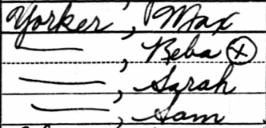RoostTech 2015 is now one for the history books. As it was my fourth RootsTech, much of my time was spent reconnecting with genealogy friends about research progress and life changes. But even though the conference itself is now old hat for me, I still managed a couple firsts: researching in the Family History Library and visiting Ancestry’s offices in Provo. My main regret — other than not managing to find everyone I had hoped to say hello to — is that I had to leave early to attend a meeting Sunday morning regarding the future of the cemetery my great-grandfather helped found. Talk about competing genealogy priorities! 🙂
But let’s not dwell on the negative. Here are some of my favorite moments from the conference:
Surprise Cousin Meeting
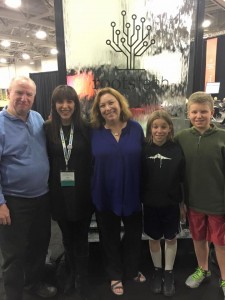
My newest margarine cousins and me!
RootsTech 2015 marked the third time I gave a presentation about the Margarine Moonshiners from Minsk, my ancestors who went to jail for selling margarine as butter in violation of federal law. The first time I gave the presentation, I met my margarine cousin Zach for the very first time — he turned up unexpectedly at that conference just a couple hours before! I invited margarine cousins Bob and Bernie to my second margarine presentation, but at first they said they couldn’t make it — until that morning they changed their schedules! We met for the first time just minutes before my talk started. And the same thing happened this time with Sheryl and her family — a regretful decline turned into a surprise first-time meeting in the exhibit hall just a couple hours before the start time! At the end of the talk when I pointed her out to the rest of the audience, they gave her a round of applause. It was a memorable moment for us both — for her, learning about her family’s crazy history in such a formal way, and for me, having yet again the fun of watching a cousin’s reactions to the story in real time! Truly, my margarine moonshining ancestors are the gift that keeps on giving in so many ways.
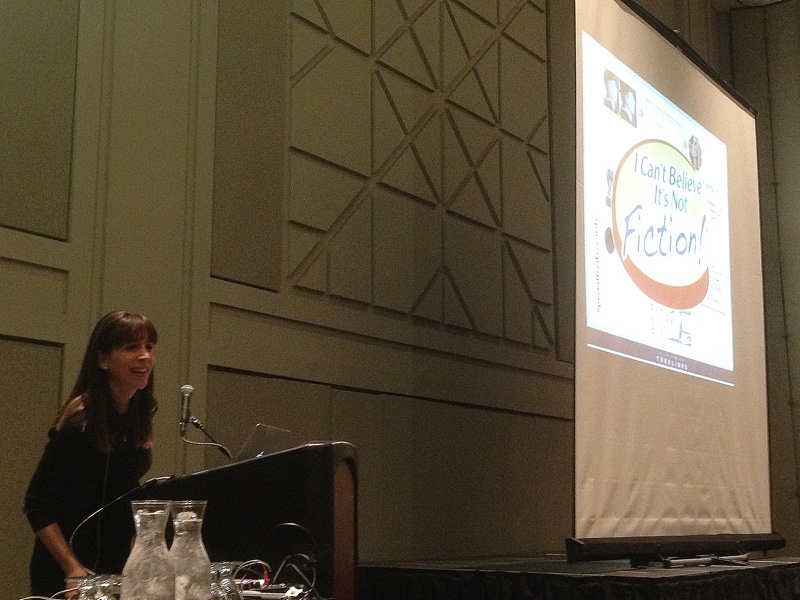
Taking questions after my class about my margarine moonshining ancestors. I still can’t believe it’s not fiction, either, though I’ve been researching these guys for almost 4 years!
Amazing Researcher Connection
It’s been one of the greatest delights of my life to introduce not only my far-flung margarine cousins, but also my closer relatives to the amazing history I’ve been uncovering. But like many of you, I’m almost always the one who is doling out information. Especially as my area of focus narrows, I started to believe I had moved beyond a place where a fellow researchers could assist.
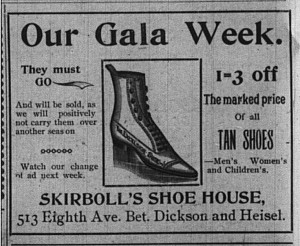
One of the records I shared. (Advertisement from The Homestead News, 9/5/1896.)
And then an acquaintance approached me in the exhibit hall and said we needed to talk. She had learned of one of my research projects through — of all things! — a proposal I submitted to the conference she is organizing, and that’s how she realized that our research interests overlapped. It turns out that she has been working for many years on a friend’s tree, and his family came from the town I am researching. More than that, one of his ancestors was top on my priority list for people to learn more about! We were both giddy as we traded information — she shared records with me documenting the family’s surprisingly early arrival in the U.S. and movements around Western PA, and I shared with her newspaper articles, advertisements, deeds, and city directories documenting his life in some detail in the town in which he settled. We each have taken a huge leap forward with the other’s info!
Incidentally, I discussed another resident of this town as a running example throughout my other class, “Story-Driven Research.” Surprisingly, half the questions after the class ended were about the research itself, and not the techniques that went into it! “Why do you know so much about a man who isn’t your ancestor?” was one question I received. I explained how much I learned about my great-grandfather by comparing him to his peers, realizing that while he ended up as successful as they, he lagged behind them in getting there by a good 10-20 years. “What do you intend to do with all this research?” another person asked, and while I stumbled over my answer, I was just gratified that anyone not from my town had an interest in my research at all!
Ancestry Tour
Friday morning I had the opportunity to spend the morning out in Provo at Ancestry’s headquarters. Though I was there with a group for meetings, our host gave us a tour of the offices. With signs like “Trees UI,” “Story Engineering,” and “Big Tree” denoting different departments, I could have spent a day learning about each team had it been possible. (Their tech department seemed especially fun, having slightly modified all their signs, like “Tech Ops” to “Tech Oops,” “DBAs” (database administrators) to “DOAs,” and “Network” to “Notwork.”) But the most jaw-droppingly awesome part of their operation was their digital production environment. You, too, would have salivated over the rows of state-of-the-art machines and software to digitize every kind of record you could have possibly imagined. Ancestry takes a lot of flack for outsourcing this work (including from me), but it’s clear that they do take on a fair bit of it themselves and have a number of QA processes in place to review what work the vendors have done.

Automated microfilm scanners. See one in action here.

Rows of foot-operated book scanners.
I spent the rest of the morning dreaming of the possibilities of all the records I would digitize… if only… After lunch in Ancestry’s cafeteria, the Shaky Leaf Cafe (!), I didn’t notice when the rest of my group was handing in their badges. “I know what you’re up to,” my host joked. “You want to sneak in here at night and digitize things!”
Actually, there were a lot of things from RootsTech I wish I could have taken with me. To paraphrase an old tagline of a Jane Austen website I used to frequent, RootsTech is one of my havens in a world programmed to misunderstand an obsession with things genealogical. Yes, I wish I had year-round, personal access to Ancestry’s state-of-the-art digitization operation :-), but more than that, the energy of the vendor hall, the excitement of swapping stories with fellow genealogists, and the endless learning opportunities are what I hope to carry with me in some way throughout the coming year.
 Follow
Follow


 Have you heard about Heartbleed? It’s a
Have you heard about Heartbleed? It’s a 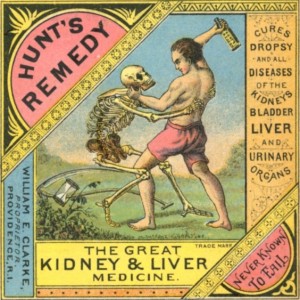 Recently I read in Carla Peterson’s impressive
Recently I read in Carla Peterson’s impressive 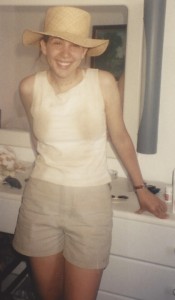


 Here is my grandfather with his parents in the 1940 census. What do you think his mother’s name is?
Here is my grandfather with his parents in the 1940 census. What do you think his mother’s name is?
